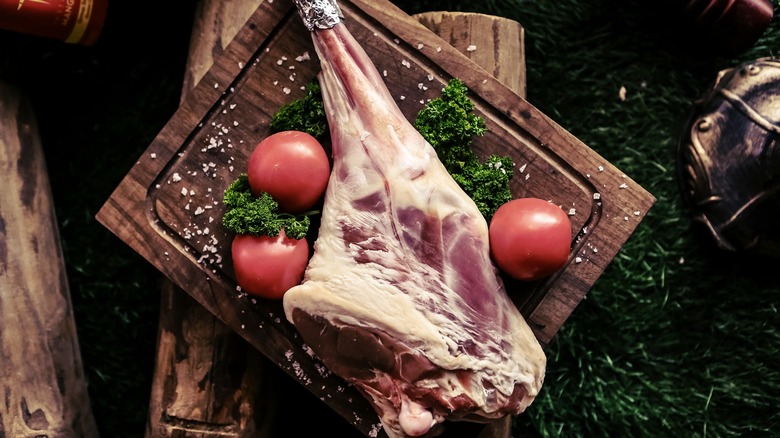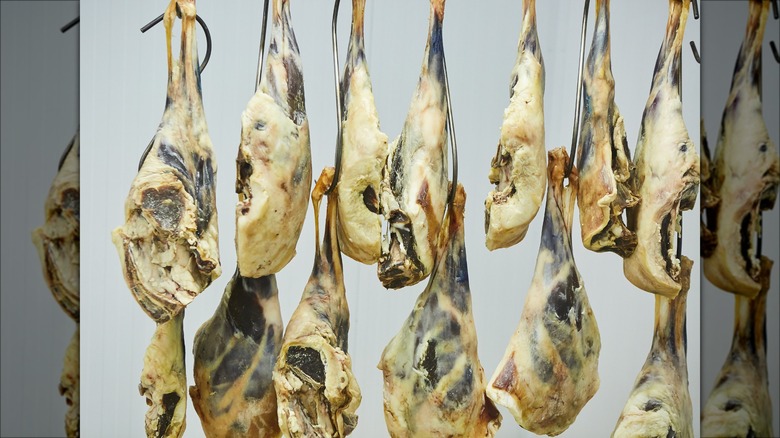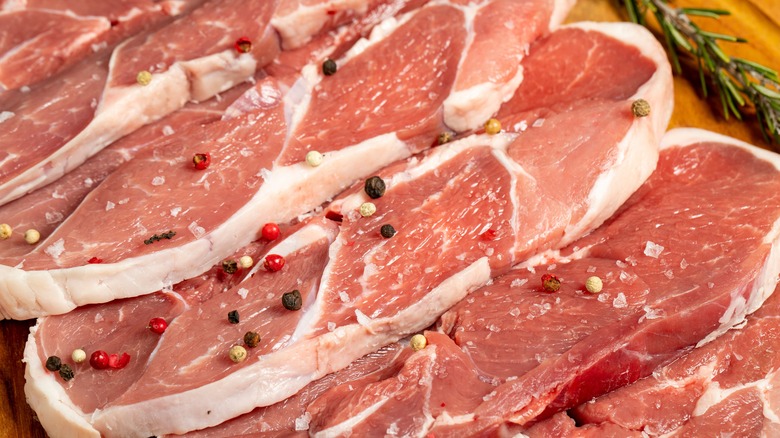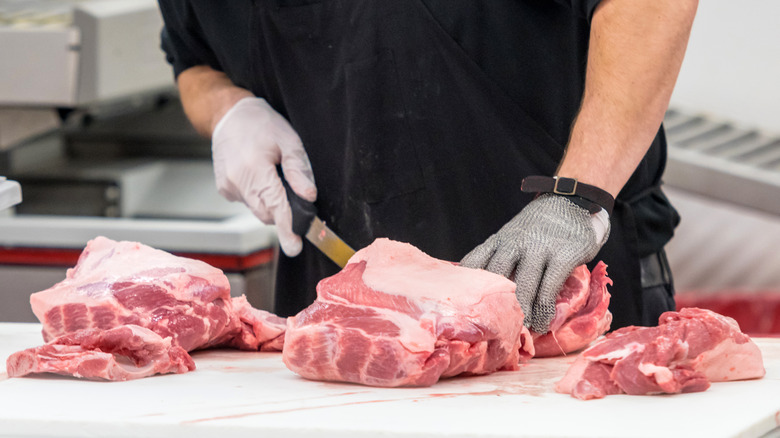Here's What You Should Know When Buying A Leg Of Lamb, According To Butcher Pat LaFrieda
Though it used to be a common meat for meals, these days, Americans seem to reserve lamb for special occasions. It's eaten widely around the world, but here somehow fell out of favor — blame the gaminess, perhaps. With that, the knowledge of what differentiates quality cuts from the more mundane is somewhat lost, especially when it comes to larger joints such as a whole leg of lamb, which work wonderfully when roasted whole, such as in our classic leg of lamb recipe. But knowing what to look for can make a big difference, says legendary butcher Pat La Frieda, owner of Pat LaFrieda Meat Purveyors. To help you better discern the differences, Tasting Table asked LaFrieda — an expert we turn to frequently with some of our meatier questions, such as how to master a steak dinner – for some pointers on purchasing a great leg of lamb.
"First you have to ask your butcher for domestic lamb and then look for a USDA label saying choice or prime," explains LaFrieda. "This is important because only domestic lamb is USDA graded. When lamb is graded it takes into account the age and marbling. The younger and more marbled meat, the higher the grade. The best kind is labeled as 'Prime,' but 'Choice' is more often seen at stores and is a close second."
Age matters when it comes to lamb
To some, age may just be a number, but when it comes to ham of lamb, age is everything. Lamb is, of course, young sheep. Thus, age is the very factor determining what is lamb. Older cuts of the sheep are called mutton, though in the U.K. and among some butchers there is a juvenile distinction called hogget. As LaFrieda points out, even among what is still called lamb — that which is still under a year old — there are age-related distinctions that can affect flavor. "You have to look for the age of the lamb — ask the butcher or check the color," LaFrieda advises. "The meat from a young lamb will have a dark pink hue, and an older lamb will have more of a purple hue."
Why does this matter? Well, that younger, lighter-colored meat will have a more tender texture and milder flavor. That doesn't mean that it is necessarily better, as some people prefer the rich and distinct taste of lamb or even mutton over lamb. If that's the case, feel free to opt for the older, darker meat of lambs that have a bit more age on them.
Lambs are what they eat
As with all animals, diet makes a difference too. The preference of what to feed a flock varies from farmer to farmer and across nations. This is, again, why LaFrieda prefers lamb that is raised stateside. Due to the diet that is typical of American farms, lambs tend to put on a bit more weight in the form of fat. Fat being a strong carrier of flavor, this leads to richer meat, especially in a cut that has deep marbling like the leg, one of our favorite cuts of lamb to grill. Once more, age is a factor as the older any animal is, the more time it has to be affected by the feed it is exposed to.
"It all starts with what they're fed, which is why the best kind of lamb is domestic," LaFrieda says. "Domestic lamb is raised on a diet of grains and legumes, unlike in Australia and New Zealand where they're raised eating only grass. It also depends on their age; the best lamb comes from animals between eight to ten months old on an American farm, sometimes in upstate New York or mostly in or around Colorado."
Trusting your butcher and the cost of cuts
Lamb legs aren't as bulky as a steamship round, but they aren't a dainty cut either. It's natural to wonder how one should approach the cut with a knife; some recipes call for boning the leg of lamb while others recommend butterflying. As mentioned, fat carries flavor, but this cut may have pockets of fat that have you worried. Once more, LaFrieda says it is important to place your trust in your butcher.
"If you don't feel comfortable with trimming the lamb by yourself, the butcher can always do it for you and will trim it to your desire based on what cut you have," reassures LaFrieda. "The butcher will always know the recommended cut for the dish you want to make."
Price can be another huge factor in limiting lamb intake. You may have seen a not insignificant number across from an order of lamb chops on a restaurant menu and thought that the meat is going to drain your wallet. It's something to keep in mind, but with a caveat LaFrieda says. "Lamb is on the pricey side; it's the second most expensive meat after veal. However, it does depend on which cut you get. The less expensive lamb cuts are called "economy cuts" such as the shanks and leg steaks, which is a great way to enjoy the flavor without spending the money on chops."



